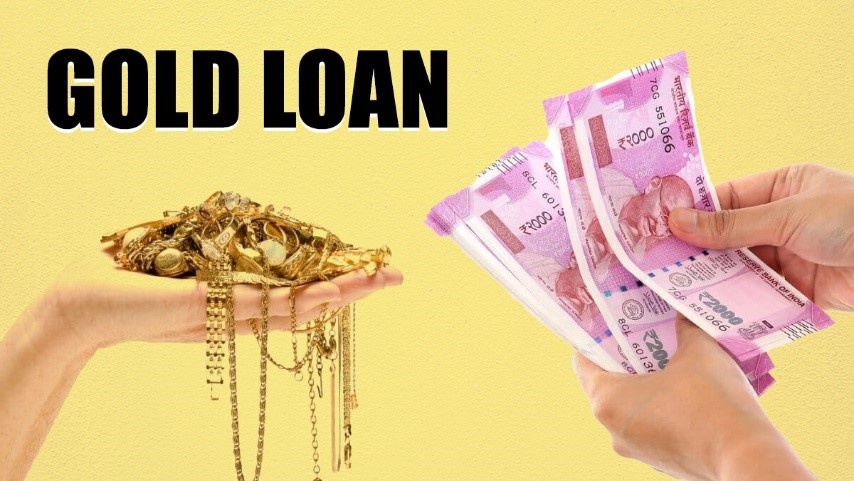Description

Disclaimer: Copyright infringement not intended.
Context
- Earlier this month, the Reserve Bank of India (RBI) urged gold loan lenders to follow regulatory norms.
- This is meant to tighten control over Non-Banking Financial Companies (NBFCs).
- This move comes after the RBI discovered some NBFCs were not complying with these norms.
- In March, the RBI banned IIFL Finance from issuing new gold loans due to violations of lending regulations.
All about NBFCs: https://www.iasgyan.in/blogs/nbfcs-and-its-types
What are the RBI’s gold loan norms?
The Reserve Bank of India (RBI) has set specific guidelines for gold loans:
- Loan Amount Limit: Lenders can only offer up to 75% of the gold's value as a loan to ensure there is enough collateral to cover potential losses if the borrower defaults.
Note: It should be noted that the RBI had temporarily allowed lenders to make loans up to 90% of the value of the underlying gold collateral during the pandemic to help borrowers, and this also helped NBFCs expand their loan books aggressively. However, this higher limit expired in March 2021.
- Disbursement Restrictions: To comply with income tax rules, lenders can disburse no more than ₹20,000 in cash. The rest of the loan amount must be deposited into the borrower's bank account.
- Auction Process: If a borrower defaults, the gold must be auctioned in a fair and transparent manner, and the auction should be held in locations accessible to borrowers.
The RBI is also working on more detailed guidelines for gold loans to ensure stricter compliance.

Why does the RBI want to reinforce these norms now?
- The RBI found that some Non-Banking Financial Companies (NBFCs) are violating gold loan regulations.
- In March, IIFL Finance was disciplined for issues including:
- Loan amounts exceeding 75% of the gold's value.
- Inaccurate gold evaluation.
- Improper loan disbursal practices.
- Irregularities in the auction process.
- NBFCs may aggressively expand their loan portfolios by overestimating the value of gold collateral.
- Unlike banks, which use external assayers, NBFCs often use internal assayers, leading to potential overvaluation.
- Since the pandemic, NBFCs' gold loan portfolios have grown rapidly, from ₹35,000 crore in 2020 to ₹1,31,000 crore in 2023.
- The RBI fears that such aggressive lending and widespread norm violations could cause future systemic issues as the gold loan industry continues to grow.
|
LTV (Loan-to-Value) Ratio for Gold Loans:
- Definition: LTV is the ratio of the loan amount sanctioned to the value of the gold deposited as collateral.
- Value Basis: The value of the gold used as collateral is based solely on the actual weight of the gold, not the purchase price.
- Exclusions:
- Making charges of the jewelry are excluded.
- The value of any precious or semi-precious stones in the jewelry is excluded.
- Current Market Rate:
- The gold rate used to calculate the loan amount is based on the current market rate.
- Some lenders might use an average rate from the past few days or weeks.
- Variations by Lender: The specific rate and calculation method can vary from lender to lender.
- How is LTV Calculated? The LTV (loan-to-value) ratio is calculated using the following formula:
LTV = Loan amount / Market value of the collateral
- How does the LTV ratio affect the interest rate? A higher LTV ratio results in a higher interest rate, as it indicates a riskier investment for lenders.
- What is the new rule of RBI for gold loans? The RBI has increased the gold loan limit under the bullet repayment scheme for urban co-operative banks (UCBs). The limit has been raised from ₹2 lakhs to ₹4 lakhs for UCBs that have met the overall target and sub-targets under Priority Sector Lending as of March 31, 2023.
- What are the restrictions on gold loans? The RBI mandates that banks can lend only up to 75% of the value of the gold jewelry pledged as collateral. This protects both the borrower and the lender.
- What is the minimum value for a gold loan? The minimum value for a gold loan varies by bank and NBFC, typically ranging from ₹3,000 to ₹20,000.
|
|
PRACTICE QUESTION
Q. Consider the following statements regarding the Loan-to-Value (LTV) ratio for gold loans:
1. The value of the gold used as collateral is based on the purchase price, including making charges and the value of any precious stones.
2. The gold rate used to calculate the loan amount is always based on the current market rate.
3. The Reserve Bank of India (RBI) allows banks to lend up to 90% of the value of the gold jewelry pledged as collateral.
Which of the statements given above is/are correct?
A) 2 only
B) 1 and 2 only
C) 2 and 3 only
D) All
Answer: A) 2 only
|













